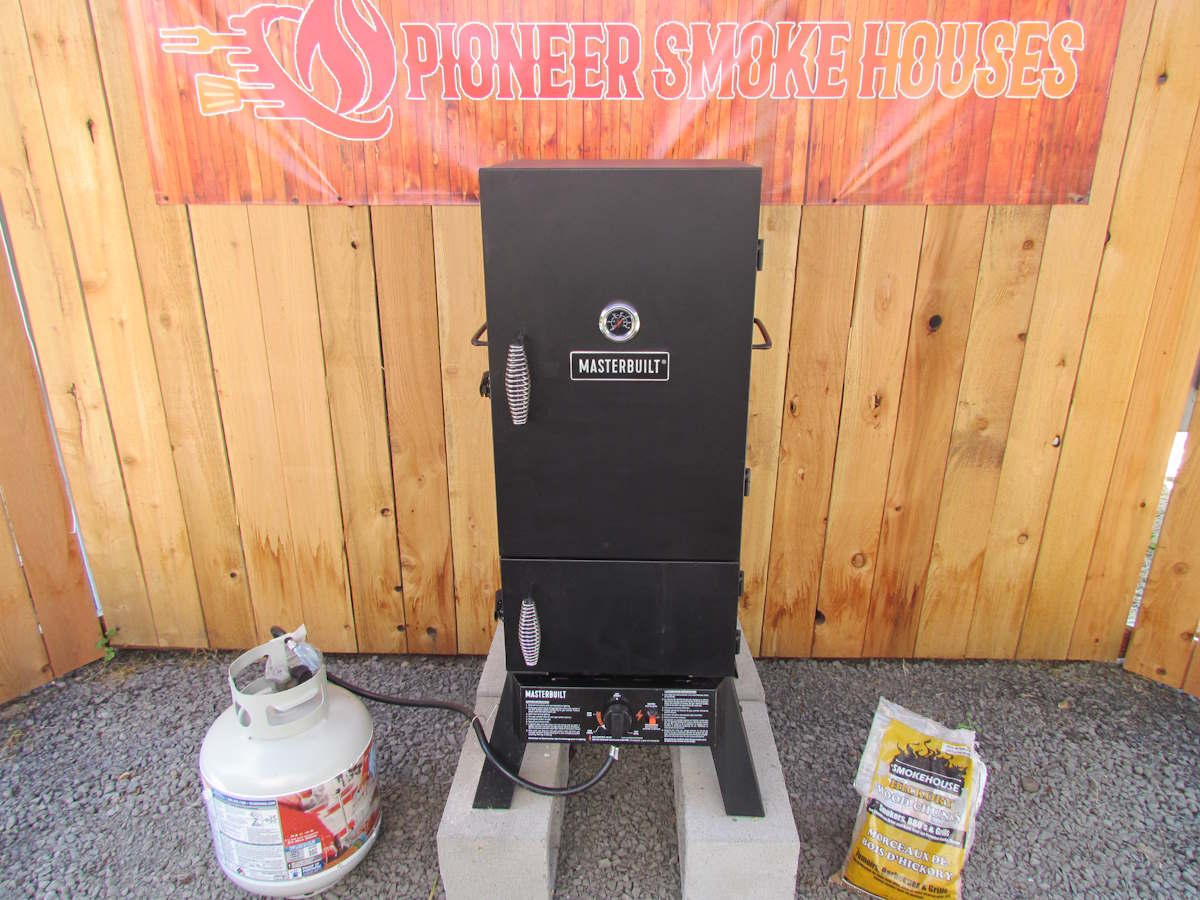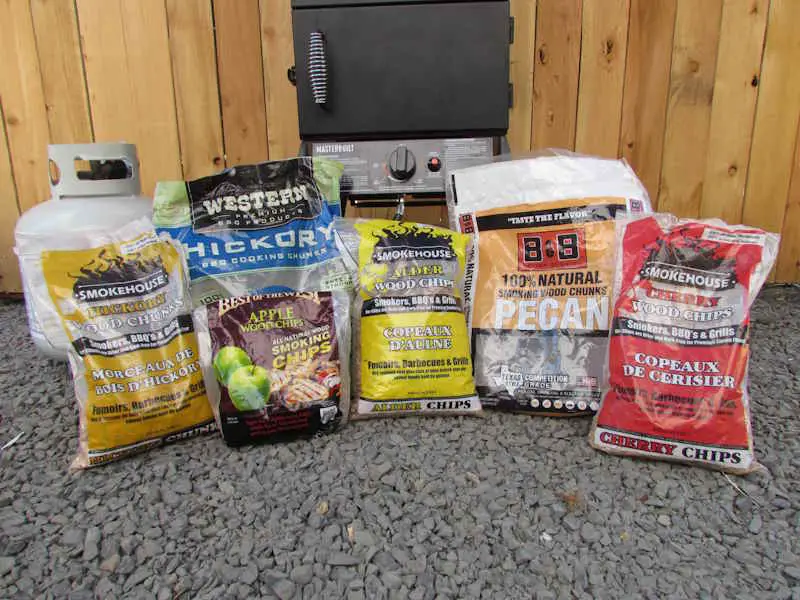
About 64% of adults in the US own a grill or a smoker.
The flavoring that you get on your meat when it’s smoking is a staple of many meals at many dinner tables. But getting it right can often be a challenge.
Seasoning steaks, marinating, or curing meat is a simple undertaking upon consultation with a cookbook or the internet. But getting the right flavor with propane smokers is another task altogether.
Perhaps you’ve been looking to buy a brand-new smoker and want to know how to get the most out of it. Or maybe you’re built a smoker out of an old metal drum and are keen to fill it. Either way, this article will help you to perfect your smoker’s results so that you can feel more assured in your next meal.
Getting Started
To become an expert at smoking meat using a propane smoker, and maneuvering around its complex operations, it is best to start with a smaller and straightforward unit designed with beginners in mind, such as the Masterbuilt MPS 230S Propane Smoker 30″.
After you’ve had some experience and learned how to control the gas smoker temperature, you can move on to something more substantial and more complicated. Focus more on the quality and kinds of meat available, as well as seasoning the meat to your preference, to understand how different cuts behave during the entire smoking process.
Smoking Technique
Smoking meat on a propane smoker takes a little bit of patience, dedication, and experience to achieve your goals. Before smoking meat, trim, pat it dry, and let it sit out for a while to bring it to room temperature; keeping food safety in mind.
The fat and grease from the heat will distribute itself evenly across the meat. Take time to consider that each meat has an ideal temperature and smoking practices that must be followed. Temperature operations must be whipped-out correctly, and the door’s opening should be minimized to allow steady heat circulation.
Just focus on the wood chips and the meat’s exact temperature and leave the rest of the unit to do its work. Once done, be patient with the cleanup; it can be messy, but when done right, the smoked meat is more than worth it!
Temperature Control Techniques
A basic smoking technique that beginner smokers should learn is to keep the temperature steady when smoking meat. A propane smoker is ideal for this purpose. You can easily adjust the heat to maintain a steady temperature and avoid any fluctuations.
- Preheat your Propane smoker. Most propane smokers are constructed of sheet metal and typically have no insulation. The preheating process will get a stable temperature by bringing all parts of the smoker to a consistent temperature.
- Adjust your temperature after adding woodchips. Most smokers will increase in temperature after the wood chips start to smoke. Keep a close eye on the smoker’s temperature for about ten minutes after adding new woodchips. Also, be prepared to adjust the temperature after the woodchips are consumed. I run my gas smoker at a slightly lower temperature at the beginning of my cooks.
- Never close your vents completely. Many propane smokers are completely enclosed but this can create a problem. Without a source of fresh air, your smoker can suffocate, causing it to burn poorly or completely go out. Also, a small amount of circulation prevents the smoke from becoming bitter.
- Avoid opening the door. Every time you open the smoker’s door, all the heat and smoke will escape. This can be a big issue if you have one door propane smoker. Using a dual-probe thermometer can help monitor the ambient temperature and the meat’s internal temperature without opening the door. However, the only way to prevent releasing the smoke and heat when loading wood chips is to buy a smoker with a separate combustion chamber door, aka a 2 door model.
- Make small adjustments. Propane dial adjusters or regulators can be very sensitive. When adjusting the knob, make small turns and wait three minutes for the temperature to stabilize. Making these adjustments can be a long process but it is very necessary.
- Divide your cook into two temperature phases. The beginning of your cook is the best time to add a smokey flavor. Set your smoker’s temperature 25 degrees under your target cooking temperature to avoid going over the temperature. After two hours of smoke, your food should have enough smoke infused for that yummy flavor. Once the woodchips are gone, adjust to the target cooking temperature.
With these techniques, you should be able to get a smooth temperature from your gas smoker, resulting in moist and tasty meats.

Smoke Flavor
Smoke flavoring is the ultimate goal when it comes to smoking meat, adding depth and taste to any BBQ dish you’re cooking. Getting that deep, smoky flavor is the highlight of a successfully smoked dish. So how do you attain that perfect, unforgettably tender, and flavorful smoked meat?
The first (and perhaps the most crucial) factor for achieving an ideal smoke flavor is patience. While getting things done quickly is ideal, you want to avoid rushing things.
Smoking meat on a propane smoker is a long process, and nothing good comes out of trying to get it done too quickly. Ideally, you should have a timer at hand and stick to the smoking instructions meticulously.
The type of meat and the wood chips you use will dictate how smoke permeates the meat. With experience and experimentation comes the know-how of what type of wood to use for which type of meat and understanding how much smoke for the meat.
Some of the most popular types of woodchips include:
- Hickory
- Apple
- Cherry
- Pecan
- Mesquite
- Oak
- Peach
Wood can be sourced in many sizes and many places. Typically, wood for a gas smoker can be bought from your local grocery, hardware, or bbq store.
Also, if friends, family, or yourself cut down a fruit tree or hardwood tree, it can be dried and turned into smoke.
Adding Smoked Flavor to Meat
Another great hack to add layers of flavor to smoke meat is to add smoked spices to your dry rubs, marinades, and brine. A short list of spices includes smoked paprika and smoked salt, but the options are limitless.
Adding these smoked spices to any preparation is a great place to start; let’s cover dry rubs first. You can make a simple dry rub, like SPG(salt, pepper, and garlic), experiment with spice blends, or buy a premix like Kosmos Q Cowcover and add your smoked spices.
Marinade and injections are a great way to add extra layers of flavor. Try starting with a cup of stock and a cup of bbq sauce, then add your favorite spices. Put the marinade and the meat in a ziplock bag for a few hours in the refrigerator.
Also, you can use a meat syringe to inject the mixture into your meat. When injecting the liquid add small amounts every inch, about a tablespoon per injection.
Brining meat, particularly chicken and leaner meats, before smoking them adds flavor and moistness to the cuts. This process can also alter the meat’s texture and help retain its juices, which is especially helpful for most cuts of white meat poultry or lean pork.
Make sure that when you brine, allow enough time to complete the osmosis process, or you might end up with dry meat.
Budget-Friendly Smokers
Regardless of whether you’re a beginner or an advanced griller, it is not necessary to splurge your savings on buying sophisticated smokers when on a tight budget. Practical and budget-friendly alternatives, albeit simple when compared to bigger-sized, more elaborate smokers, can still get the job done.
Therefore, it makes sense to invest in something small, compact, and sturdy that will meet practical smoking needs. It is essential to escape the temptations to buy the latest, greatest smoker and focus on the budget with your first gas smoker.
Keep in mind that excellent results ultimately rely on the quality of operation and the decision of flavors and temperatures. Before purchasing a budget smoker unit, research and read the reviews carefully, inspect it in person if possible, and ensure the unit meets your exact needs.
Learning More About Propane Smokers
Propane smokers allow anyone to become a master of smoking. With the right techniques, flavors, and tips, even beginners can make delicious food. Add in a few extra tips, and you can become an expert smoker in no time.
Try out some of these tips and flavors now to begin mastering the art of the propane smoker. For anyone who has more interest in smokers, Pioneer Smoke Houses provides plenty of information. Take a look at this recent article to see a few reviews of some of the best beginner-friendly smokers on the market.

